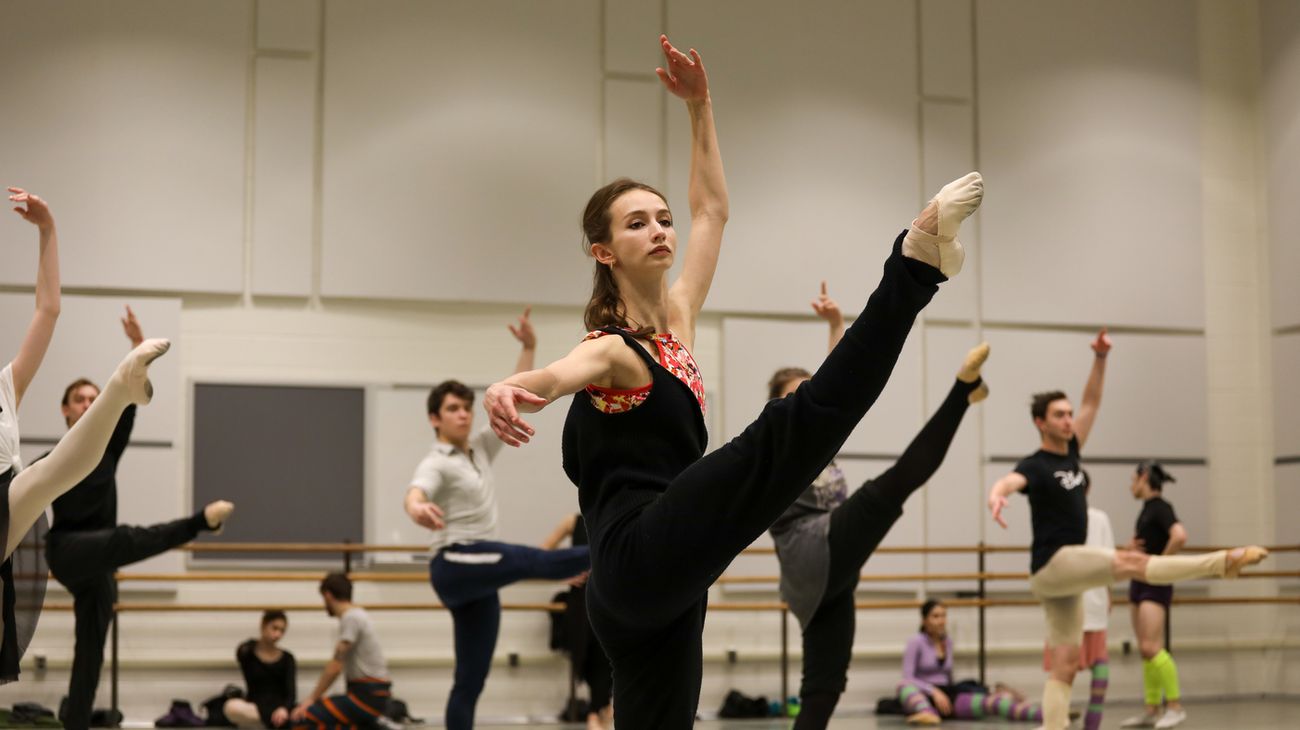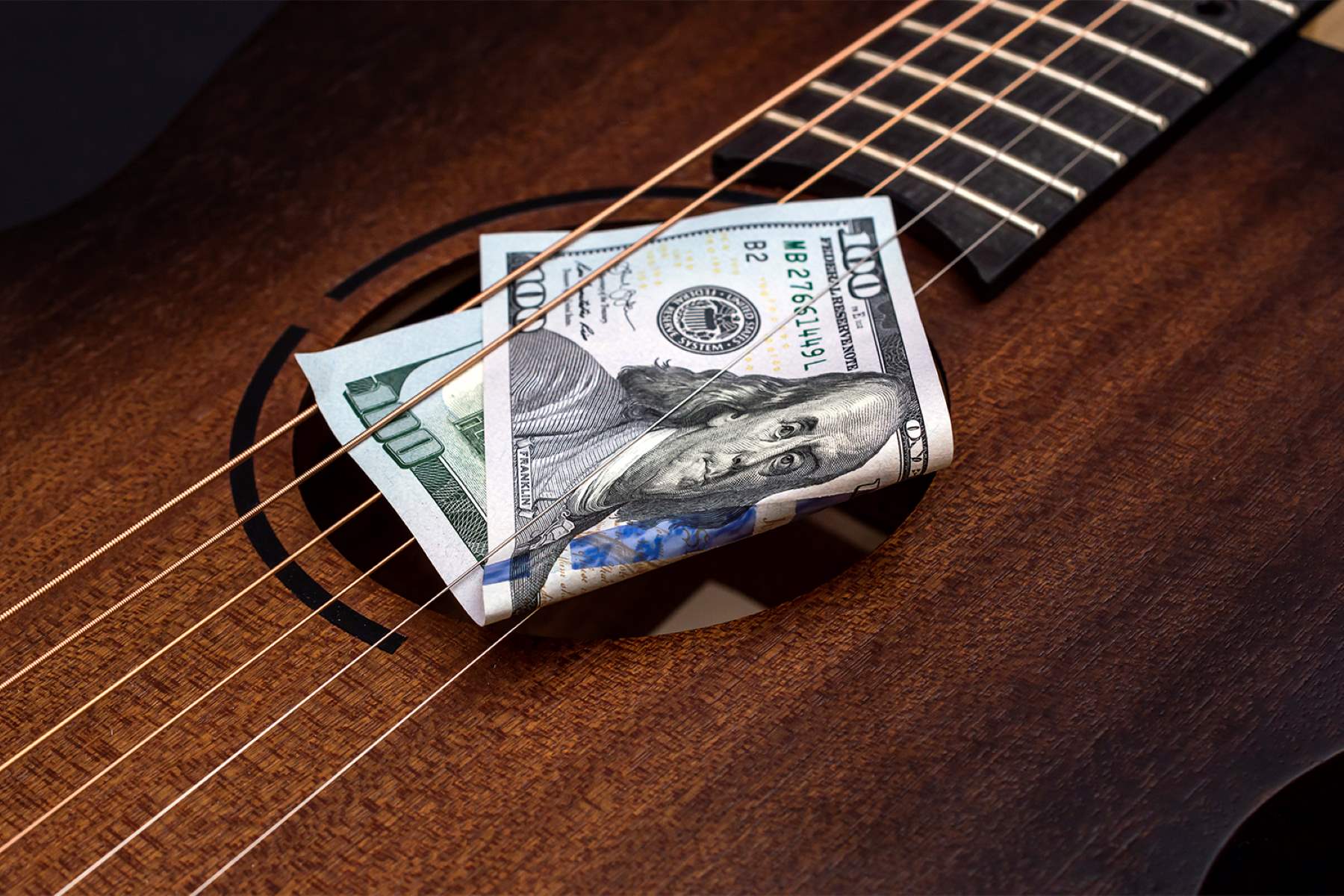

Jazz
How Much Do Jazz Musicians Make
Modified: January 29, 2024
Discover the earning potential of jazz musicians. Learn about the average income and salary ranges for jazz musicians in the industry.
(Many of the links in this article redirect to a specific reviewed product. Your purchase of these products through affiliate links helps to generate commission for AudioLover.com, at no extra cost. Learn more)
Table of Contents
Introduction
Jazz music is a genre known for its improvisation, complex harmonies, and rhythmic intricacies. It has a rich history and continues to be celebrated for its cultural significance and artistic expression. Behind the vibrant melodies and soulful solos, there is a group of talented musicians who dedicate their lives to perfecting their craft. However, many people wonder, “How much do jazz musicians make?”
The income of jazz musicians can vary significantly depending on various factors such as experience, skill level, location, opportunities, and the ability to navigate the ever-changing music industry. While some may picture jazz musicians living lavishly off their art, the reality is that it can be a challenging and unpredictable profession.
Despite these challenges, many jazz musicians find immense fulfillment in sharing their music with audiences around the world. They are driven by passion, creativity, and the desire to connect with listeners. In this article, we will delve into the factors that affect jazz musicians’ income, explore the income sources available to them, look at average earning figures, discuss discrepancies in income within the jazz community, and provide strategies to increase income as a jazz musician.
Whether you’re an aspiring jazz musician curious about the financial aspects of the profession or simply an enthusiast interested in gaining insight into the jazz world, this article will shed light on the fascinating world of jazz musicians and the financial realities they face.
Factors Affecting Jazz Musicians’ Income
Several factors play a crucial role in determining the income of jazz musicians. Understanding these factors can provide insight into why the earnings of jazz musicians can vary greatly. Here are some key factors that affect jazz musicians’ income:
- Experience and Skill Level: The level of experience and skill a jazz musician possesses can impact their income. Musicians who have been honing their craft for many years and have gained recognition for their proficiency are more likely to command higher fees for performances and recordings.
- Location: The location in which a jazz musician resides can greatly influence their income. Cities with thriving jazz scenes, such as New York City, New Orleans, and Chicago, often offer more performance opportunities, higher-paying gigs, and greater exposure to industry professionals. However, living expenses in these locations may also be higher, which can offset the potential increase in income.
- Opportunities: The availability of performance opportunities also impacts a jazz musician’s income. Musicians who have access to a vibrant music community, festivals, concert venues, and clubs are more likely to have a steady stream of gigs and opportunities to showcase their talent.
- Networking and Connections: Building a strong network and establishing connections within the jazz community can open doors to better-paying gigs, collaborations with renowned musicians, and opportunities for recording sessions. Musicians with a solid network can often leverage these connections to increase their income.
- Business Skills: While artistic talent is essential for success in the music industry, having business skills is equally important. Jazz musicians who understand how to manage their finances, negotiate contracts, market themselves effectively, and navigate the industry are more likely to have a stable income.
It’s important to note that these factors are not exhaustive, and each musician’s journey is unique. Additionally, the income of jazz musicians can fluctuate greatly from year to year, depending on various circumstances such as the state of the music industry, economic factors, and personal circumstances.
Now that we have explored the factors that influence jazz musicians’ income, let’s proceed to discuss the different income sources available to them.
Income Sources for Jazz Musicians
Jazz musicians employ a variety of income sources to sustain their careers and livelihoods. While the specific mix of income sources may vary from musician to musician, here are some common avenues that jazz musicians explore to generate income:
- Live Performances: Jazz musicians often rely on live performances as their primary source of income. They perform at a variety of venues, including clubs, festivals, concerts, and private events. These performances can range from intimate solo gigs to large ensemble performances.
- Recordings: Jazz musicians can earn income through album sales, streaming royalties, and licensing agreements. They may choose to release albums independently or sign with a record label. In recent years, crowdfunding platforms have also emerged as a way for musicians to finance their recordings.
- Teaching: Many jazz musicians supplement their income by teaching music privately or at educational institutions. They offer lessons on their instrument of expertise, improvisation techniques, music theory, and jazz history. Teaching can provide stability and a steady income stream for musicians.
- Composing and Arranging: Jazz musicians often compose their own music or arrange existing compositions. They may sell their original compositions, create arrangements for other performers or ensembles, or license their music for use in film, television, or advertisements.
- Collaborations: Collaborating with other musicians, both within the jazz genre and across different genres, can open up new income opportunities. Jazz musicians may be hired to contribute to recordings or performances by other artists, participate in cross-genre projects, or engage in improvisational sessions with fellow musicians.
- Grants and Scholarships: Jazz musicians can apply for grants and scholarships offered by organizations, institutions, and foundations that support the arts. These funds can provide financial assistance for recordings, tours, educational opportunities, and other career development activities.
- Merchandise and Merchandising: Selling merchandise, such as CDs, vinyl records, t-shirts, posters, and other merchandise can contribute to a jazz musician’s income. Additionally, some musicians may explore opportunities for endorsements and sponsorships with instrument manufacturers, music gear companies, or clothing brands.
While these are some of the common income sources for jazz musicians, it’s important to remember that the music industry is constantly evolving, and new opportunities may emerge over time. Musicians often have to adapt and explore multiple income streams to thrive in a competitive industry.
Now that we have discussed the income sources available to jazz musicians, let’s take a closer look at the average earnings of jazz musicians.
Average Earnings of Jazz Musicians
It is important to note that jazz musicians’ earnings can vary widely, and there is no fixed salary or standard income in the industry. The income of jazz musicians depends on various factors, including their level of experience, skill, reputation, location, and the demand for their services. Additionally, the income can fluctuate greatly from year to year, influenced by the overall health of the music industry and other external factors.
According to a survey conducted by the Jazz Education Network (JEN), the average annual income of jazz musicians in the United States falls between $20,000 and $60,000. However, this figure only represents an average and can be affected by individual circumstances and career trajectories.
It is worth noting that a significant portion of a jazz musician’s income comes from live performances. Depending on their experience and reputation, jazz musicians can earn anywhere from a few hundred dollars to several thousand dollars per gig. Some established and in-demand jazz musicians may command higher fees for their performances, especially for headline shows, festivals, and international tours.
Recordings can also contribute to a musician’s income, although the advent of streaming platforms has impacted traditional revenue streams from album sales. Musicians typically receive royalties from their recorded music, which can vary depending on the streaming platform, distribution deal, and the musician’s ownership stake in the recordings.
Teaching can be a reliable source of income for jazz musicians, offering stability and a regular paycheck. The hourly rates for private lessons can vary based on the teacher’s reputation, location, and the level of expertise they offer. Teaching at educational institutions, such as universities or music schools, can provide a more consistent income, although competition for positions may be fierce.
Collaborations and commissions can also contribute to jazz musicians’ earnings. By working with other artists, musicians can earn fees for their contributions to recordings or performances. Composers and arrangers can earn income through commissions for new works or arrangements requested by ensembles, organizations, or performers.
Despite the potential for earning a decent income, it is important to recognize that many jazz musicians often face financial challenges. The irregular nature of gigs, the unpredictability of the music industry, and the competition for opportunities can make it difficult to achieve financial stability solely through jazz music alone.
Now that we have explored the average earnings of jazz musicians, let’s discuss the disparities that exist within the jazz community when it comes to income.
Disparities in Jazz Musicians’ Income
While the world of jazz is filled with talent and creativity, there are significant disparities in income among jazz musicians. These disparities can be attributed to various factors, including systemic barriers, economic realities, and the evolving dynamics of the music industry.
One factor contributing to income disparities is representation and opportunities. Historically, jazz has been dominated by male musicians, with limited representation for women and marginalized communities. This lack of representation can often lead to fewer opportunities and reduced earning potential for musicians from underrepresented groups.
Economic factors also play a role in income disparities. The availability of well-paying gigs and performance opportunities tends to concentrate in major cities with thriving jazz scenes. Jazz musicians based in smaller towns or rural areas may face limited opportunities and lower income potential as a result.
The evolving music industry landscape has also introduced new challenges. The proliferation of streaming services and the decline in physical album sales have impacted revenue streams for jazz musicians. As a result, musicians have had to navigate alternative income sources, such as live performances, teaching, and merchandise sales, to compensate for the decline in traditional revenue channels.
Furthermore, the music industry has seen a shift in audience preferences, with commercialized genres often overshadowing jazz in terms of popularity and commercial success. This can make it more difficult for jazz musicians to gain recognition, capture a wider audience, and secure higher-paying opportunities.
Income disparities can also be attributed to the complex dynamics of bargaining power within the industry. Established jazz musicians with significant experience and a strong network may negotiate higher fees for performances, while emerging musicians may struggle to command similar rates. This can lead to income discrepancies among musicians of different career stages and levels of recognition.
Addressing income disparities within the jazz community requires a holistic approach. Efforts to foster diversity and inclusion in the industry, provide equal opportunities for marginalized musicians, and amplify underrepresented voices can contribute to a more equitable distribution of income. Additionally, advocating for fair compensation, ensuring transparency in payment practices, and promoting ethical industry standards can help create a more sustainable and inclusive environment for jazz musicians.
Now that we have explored the disparities in jazz musicians’ income, let’s discuss strategies for jazz musicians to increase their earning potential.
Strategies for Increasing Income as a Jazz Musician
For jazz musicians seeking to increase their income and achieve financial stability, there are several strategies and approaches that can be beneficial. While these strategies cannot guarantee immediate success, they can help jazz musicians navigate the complex music industry and enhance their earning potential. Here are some strategies to consider:
- Expand Your Network: Building a strong network is crucial for creating opportunities and increasing income. Attend jazz festivals, jam sessions, and industry events to connect with fellow musicians, industry professionals, and potential collaborators. Networking can open doors to more gigs, recording opportunities, and valuable connections in the music industry.
- Promote Yourself Online: In today’s digital age, having a strong online presence is essential. Create a professional website, maintain active social media accounts, and share music clips, videos, and updates about your performances and projects. Utilize platforms like YouTube, SoundCloud, and Bandcamp to share your music and reach a wider audience.
- Diversify Your Income Sources: Relying solely on live performances may not provide consistent income. Explore other income sources such as teaching private lessons, conducting workshops, composing for commissions, licensing your music for film and TV, and selling merchandise. Diversifying your income can help create stability and increase overall earnings.
- Continuously Hone Your Craft: Strive for growth and improvement as a musician. Take lessons from renowned jazz musicians, practice regularly, and strive to master your instrument. The better your skills, the more opportunities you can pursue, and the higher fees you can command.
- Seek Grant and Funding Opportunities: Research and apply for grants, scholarships, and funding opportunities provided by organizations and institutions that support jazz music and the arts. These funds can help finance recordings, tours, educational endeavors, and other career development activities.
- Create and Leverage Your Brand: Develop a unique personal brand that sets you apart from other musicians. Highlight your strengths, musical style, and unique selling points. Establishing a recognizable brand can attract more attention, increase your marketability, and potentially lead to higher-paying opportunities.
- Collaborate with Other Artists: Collaborations with musicians from different genres can broaden your reach and introduce you to new audiences. Partnering with artists outside of the jazz genre can result in unique projects, cross-promotion, and potentially higher-paying opportunities.
- Stay Informed About Industry Trends: Keep up to date with the latest industry trends, technological advancements, and changes in the music business landscape. Being aware of emerging platforms, marketing strategies, and industry shifts can help you adapt your approach and maximize your income potential.
Implementing these strategies requires dedication, perseverance, and a willingness to adapt to the ever-changing music industry landscape. Remember that building a successful career as a jazz musician takes time, and the path to increased income may be challenging. However, with passion, determination, and strategic planning, it is possible to increase your earning potential as a jazz musician.
Before we conclude, let’s summarize the key points discussed in this article.
Conclusion
Jazz musicians are passionate artists who captivate audiences with their improvisation, creativity, and musical prowess. However, the financial aspect of being a jazz musician can be challenging and uncertain. Factors such as experience, location, opportunities, and networking play a significant role in determining the income of jazz musicians.
Jazz musicians have various income sources, including live performances, recordings, teaching, composing, collaborations, grants, and merchandise sales. Each source contributes to their overall income and provides stability in an industry that can be unpredictable. However, income disparities exist within the jazz community, influenced by systemic barriers, economic factors, and industry dynamics.
To increase their earning potential, jazz musicians can employ strategies such as expanding their network, promoting themselves online, diversifying their income sources, continuously improving their skills, seeking funding opportunities, creating a strong personal brand, collaborating with other artists, and staying informed about industry trends.
While these strategies can help jazz musicians increase their income, it is essential to approach the music industry with resilience, adaptability, and a committed passion for the art. Creating a sustainable career as a jazz musician takes time and perseverance, but with determination and strategic planning, it is possible to achieve financial stability and make a living doing what you love.
In conclusion, jazz musicians face both challenges and opportunities in their quest to make a living from their art. By understanding the factors affecting their income, exploring various income sources, addressing disparities, and implementing effective strategies, jazz musicians can enhance their earning potential and continue sharing their beautiful music with the world.











